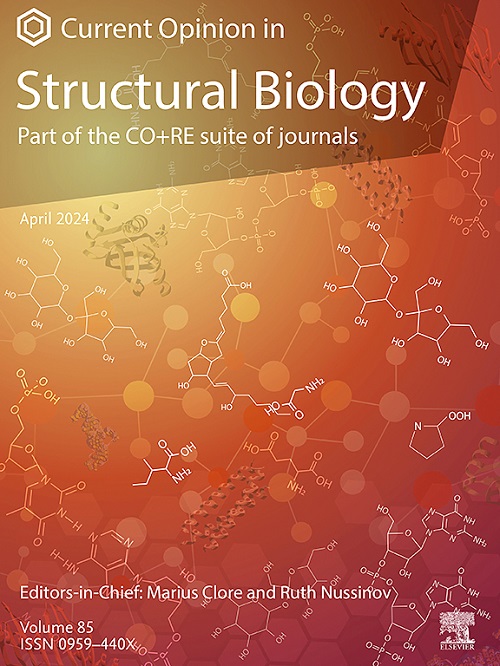Atomistic simulations of intact virus capsids: A computational challenge worth the scientific payoff
IF 6.1
2区 生物学
Q1 BIOCHEMISTRY & MOLECULAR BIOLOGY
引用次数: 0
Abstract
All-atom molecular dynamics (MD) simulations of intact virus capsids provide unparalleled insights into the functional motions of these complex macromolecular assemblies. Despite the computational challenges of simulating multimillion-atom systems, these simulations uniquely reveal the structural basis for emergent properties, including collective motions, allostery, selective permeability, and mechanical responses that are inaccessible through experimental methods. Capsid simulations also drive technological advancements in MD methodologies, analysis tools, and multiscale modeling, fostering broader innovations in structural biology and biophysics. Given next-generation computational resources, MD simulations will continue to illuminate virus biology, support antiviral drug discovery, and enhance preparedness for emerging viral diseases. Here, atomistic simulations of complete capsid assemblies are reviewed, and their role in elucidating fundamental principles of virus function and therapeutic targeting is discussed. Altogether, MD of intact capsids is a computational challenge worth the payoff.

完整病毒衣壳的原子模拟:值得科学回报的计算挑战
完整病毒衣壳的全原子分子动力学(MD)模拟为这些复杂大分子组装的功能运动提供了无与伦比的见解。尽管模拟数百万原子系统在计算上存在挑战,但这些模拟独特地揭示了涌现特性的结构基础,包括集体运动、变构、选择渗透性和机械响应,这些都是通过实验方法无法实现的。衣壳模拟还推动了MD方法、分析工具和多尺度建模的技术进步,促进了结构生物学和生物物理学更广泛的创新。鉴于下一代计算资源,MD模拟将继续阐明病毒生物学,支持抗病毒药物的发现,并加强对新出现的病毒性疾病的准备。本文综述了完整衣壳组装的原子模拟,并讨论了它们在阐明病毒功能和治疗靶向的基本原理方面的作用。总之,完整衣壳的MD是一个值得付出的计算挑战。
本文章由计算机程序翻译,如有差异,请以英文原文为准。
求助全文
约1分钟内获得全文
求助全文
来源期刊

Current opinion in structural biology
生物-生化与分子生物学
CiteScore
12.20
自引率
2.90%
发文量
179
审稿时长
6-12 weeks
期刊介绍:
Current Opinion in Structural Biology (COSB) aims to stimulate scientifically grounded, interdisciplinary, multi-scale debate and exchange of ideas. It contains polished, concise and timely reviews and opinions, with particular emphasis on those articles published in the past two years. In addition to describing recent trends, the authors are encouraged to give their subjective opinion of the topics discussed.
In COSB, we help the reader by providing in a systematic manner:
1. The views of experts on current advances in their field in a clear and readable form.
2. Evaluations of the most interesting papers, annotated by experts, from the great wealth of original publications.
[...]
The subject of Structural Biology is divided into twelve themed sections, each of which is reviewed once a year. Each issue contains two sections, and the amount of space devoted to each section is related to its importance.
-Folding and Binding-
Nucleic acids and their protein complexes-
Macromolecular Machines-
Theory and Simulation-
Sequences and Topology-
New constructs and expression of proteins-
Membranes-
Engineering and Design-
Carbohydrate-protein interactions and glycosylation-
Biophysical and molecular biological methods-
Multi-protein assemblies in signalling-
Catalysis and Regulation
 求助内容:
求助内容: 应助结果提醒方式:
应助结果提醒方式:


